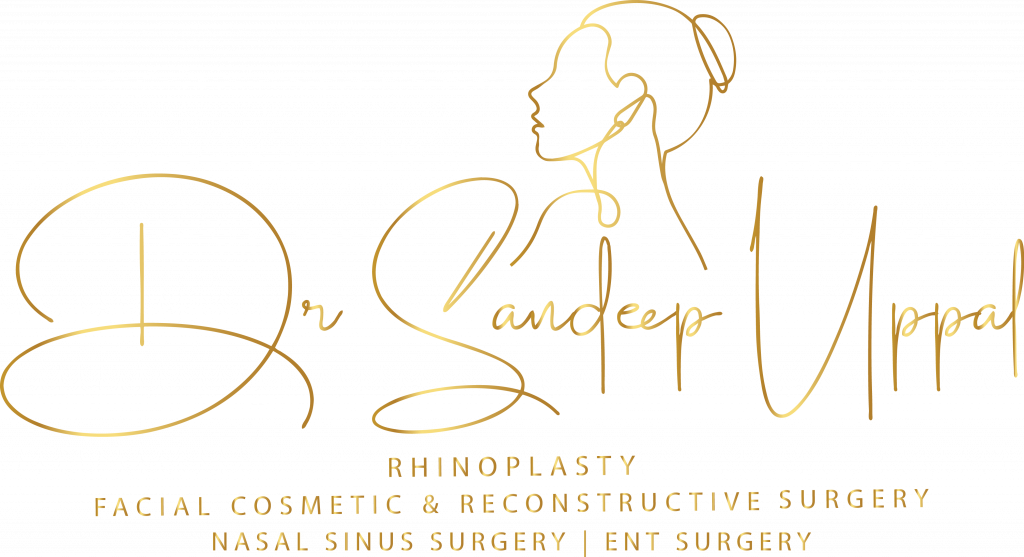Sudden Hearing Loss: Causes, Diagnosis, and Management A Guide by Dr Sandeep Uppal, ENT Specialist in Singapore
Hearing loss is a common condition, but when it occurs suddenly, it can be alarming and distressing. Sudden Hearing Loss (SHL) is typically defined as a rapid onset of hearing impairment over a period of 72 hours or less. It is crucial to seek immediate medical attention as early intervention improves the chances of recovery. Causes of Sudden Hearing Loss Sudden hearing loss can be classified into conductive and sensorineural types: 1. Conductive Hearing Loss Conductive hearing loss occurs when sound waves cannot reach the inner ear due to obstructions or abnormalities in the outer or middle ear. Causes include: Earwax impaction: Excessive earwax can block the ear canal, preventing sound from reaching the eardrum. This is a common and reversible cause of hearing loss that can be treated with ear irrigation or microsuction. Acute otitis media (middle ear infection): Infections in the middle ear cause fluid buildup behind the eardrum, leading to temporary hearing loss. If untreated, chronic infections can result in persistent conductive hearing loss Otosclerosis: A hereditary condition where abnormal bone growth in the middle ear interferes with sound transmission. It typically affects the stapes bone and can lead to progressive hearing loss, often requiring surgical treatment. Barotrauma: Sudden changes in pressure (e.g., during air travel or diving) can damage the eardrum or middle ear structures, causing temporary or permanent hearing impairment. In the following clinical photographs B to F show various presentations of barotrauma to the ear. A is normal ear drum. Tympanic membrane perforation (e.g., due to earbud use or trauma): Inserting objects like cotton swabs or earbuds too deeply into the ear canal can rupture the eardrum, resulting in sudden hearing loss. In most cases, the perforation heals spontaneously, but larger defects may require surgical repair. Cholesteatoma: An abnormal skin growth in the middle ear that can erode bones and lead to conductive hearing loss. It often requires surgical removal to prevent complications. Ossicular chain disruption due to trauma: Direct trauma to the head or ear can dislocate the ossicles (tiny bones in the middle ear), leading to significant hearing loss. Surgical intervention may be needed. 2. Sensorineural Hearing Loss (SNHL) Sensorineural hearing loss results from damage to the inner ear (cochlea) or auditory nerve pathways. Causes include: Idiopathic Sudden Sensorineural Hearing Loss (ISSNHL): A sudden loss of hearing with no identifiable cause, often presumed to be viral or immune-mediated. Prompt treatment with corticosteroids is crucial for recovery. Viral infections (e.g., herpes simplex virus, cytomegalovirus): Certain viral infections can damage the cochlear nerve or hair cells, leading to permanent hearing impairment. Reactivation of latent viruses may also contribute to sudden hearing loss. Bacterial infections (e.g., syphilis, Lyme disease, meningitis): Bacterial infections affecting the inner ear or nervous system can lead to irreversible sensorineural hearing loss. Early antibiotic treatment is essential. Ototoxic drugs (e.g., aminoglycosides, cisplatin, loop diuretics): Some medications can damage the hair cells in the cochlea, causing progressive or sudden hearing loss. Monitoring drug levels and using alternative medications when possible is recommended. Autoimmune inner ear disease: An immune-mediated attack on the inner ear structures can cause fluctuating or progressive sensorineural hearing loss, often requiring immunosuppressive therapy. Meniere’s disease: Characterized by episodic vertigo, fluctuating hearing loss, tinnitus, and aural fullness, this disorder is associated with excess fluid in the inner ear. Acoustic neuroma (vestibular schwannoma): A benign tumour on the vestibulocochlear nerve that can cause unilateral hearing loss, tinnitus, and balance issues. MRI is essential for diagnosis. Vascular events (e.g., microvascular ischemia, stroke): Reduced blood supply to the cochlea or auditory nerve can result in sudden hearing loss. Cardiovascular risk factors should be assessed. Trauma (e.g., temporal bone fractures, barotrauma): Blunt force injuries or rapid pressure changes can damage inner ear structures, leading to permanent hearing loss. Consultation and Diagnosis Initial Assessment Detailed history (onset, associated symptoms like vertigo, tinnitus, or aural fullness) Physical examination Otoscopy and ear microscopy: To assess the ear canal, tympanic membrane integrity, and signs of infection or trauma. Ear endoscopy: Provides a detailed view of the external and middle ear structures. Tuning fork tests (Rinne and Weber tests): Helps differentiate conductive from sensorineural hearing loss. Nasal endoscopy: Evaluates Eustachian tube function and detects nasopharyngeal tumours affecting the auditory pathway. Audiological Investigations Pure Tone Audiometry (PTA): Confirms sensorineural vs. conductive hearing loss. Speech Audiometry: Assesses speech recognition and comprehension at different volume levels, helping to differentiate sensorineural from conductive hearing loss. Tympanometry: Measures middle ear pressure and eardrum mobility, aiding in the diagnosis of conditions such as otitis media, Eustachian tube dysfunction, or ossicular chain abnormalities. Otoacoustic Emissions (OAE): Assesses cochlear hair cell function. Auditory Brainstem Response (ABR): Rules out retrocochlear pathology (e.g., acoustic neuroma). Radiological and Laboratory Investigations MRI with contrast (gold standard): Detects acoustic neuroma, demyelinating disease, or vascular abnormalities CT scan (if trauma or cholesteatoma is suspected). Blood tests: Complete Blood Count (CBC): Checks for infections or haematological abnormalities. Erythrocyte Sedimentation Rate (ESR) & C-reactive Protein (CRP): Evaluates for inflammatory or autoimmune conditions. Autoimmune Panel (ANA, RF, antiphospholipid antibodies, ANCA): Assesses for autoimmune inner ear disease. Viral Serology (HSV, CMV, HIV, EBV, VZV, syphilis serology): Screens for infectious causes. Thrombophilia Screen (Protein C, Protein S, Antithrombin III, Factor V Leiden mutation, Homocysteine levels): Identifies vascular aetiologies. Metabolic Panel (Glucose, Lipid profile, Thyroid function tests, Vitamin B12): Rules out metabolic contributions. Treatment of Sudden sensorineural Hearing Loss (SSNHL) Systemic Corticosteroids (First-line Treatment) Prednisolone 1 mg/kg/day (max 60 mg/day) for 7–14 days with a tapering dose. Studies support corticosteroids as the primary therapy for ISSNHL. Intratympanic Steroid Injection (ITSI) Indications: Poor response to oral steroids, contraindications to systemic corticosteroids, or as an adjunct therapy with oral steroids. Procedure: Direct delivery of dexamethasone (4-10 mg/mL) into the middle ear, absorbed through the round window. Evidence: ITSI has been shown to be effective as a salvage therapy with better hearing recovery. Hyperbaric Oxygen Therapy (HBOT) Mechanism: Increases oxygen delivery to the cochlea, promoting hair cell recovery. Protocol: 10–20 sessions of 90–120 minutes at 2.0–2.5 ATA pressure. Evidence: HBOT


